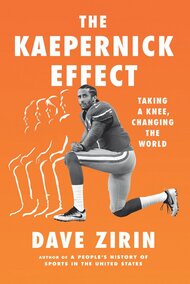Iran: It Aint a Soccer Riot

Iran's Mahmoud Ahmadinejad has compared the protests following his country's recent sham election to the common scuffles that take place after a soccer game. The Iranian President said,
“Some people are sentimental and become excited. As I said, I compared it to a soccer match. Their team has not won in the match....In the end, I don't think we'll have any serious challenges. Sentiments are high and sometimes they do some stuff on the streets, but in the end we had 40 million people participating and what is happening on the streets is like a football match.”
Someone needs to let Ahmadinejad in on the differences between a soccer riot and the explosive expressions of dissent taking place across a country of over 70 million people, 70 percent of whom are under the age of 30.
Iran's Mahmoud Ahmadinejad has compared the protests following his country's recent sham election to the common scuffles that take place after a soccer game. The Iranian President said,
“Some people are sentimental and become excited. As I said, I compared it to a soccer match. Their team has not won in the match....In the end, I don't think we'll have any serious challenges. Sentiments are high and sometimes they do some stuff on the streets, but in the end we had 40 million people participating and what is happening on the streets is like a football match.”
Someone needs to let Ahmadinejad in on the differences between a soccer riot and the explosive expressions of dissent taking place across a country of over 70 million people, 70 percent of whom are under the age of 30.
Soccer riots tend to be overwhelmingly dominated by men. This is not unique to Islamic countries, but commonplace at European and South American soccer skirmishes as well. They are often marked by testosterone-fueled fistfights and vandalism. They can be violent or even deadly and they aren't always necessarily apolitical. Some soccer clubs may clash under the banner of "racist skinhead" or "anti-racist". But more often these violent outbursts mark a release of a very aggressive, pent-up anger or frustration aimed at the stultifying, daily conditions of life. As Bill Buford wrote in his seminal 1990 book Among the Thugs:
“Why do young males riot every Saturday? They do it for the same reason that another generation drank too much, or smoked dope, or took hallucinogenic drugs, or behaved badly or rebelliously. Violence is their antisocial kick, their mind-altering experience, an adrenaline-induced euphoria that might be all the more powerful because it is generated by the body itself, with, I was convinced, many of the same addictive qualities that characterize synthetically-produced drugs.”
Regardless of how you perceive soccer riots, what is currently happening in Iran couldn't be more different. For instance women have played a prominent role in the pro-reform demonstrations taking place around the country. Women have historically had far more influence in Iranian society than the mainstream Western media generally leads us to believe. In fact, women's issues took center stage during this most recent election campaign.
This week we have heard reports of women leading anti-Ahmadinejad rallies, standing on the front lines and enduring attacks by police. Also, the vandalism and street fighting that marks soccer riots have not been on display. Instead there was a peaceful demonstration that stretched for more than five miles and may have had as many as two million people present. It was marked by chants to the police, thanking them for not resorting to violence.
Soccer riots can often sideline national minorities, who are understandably fearful of roving bands of “thugs”. In the early 1990s, soccer clubs were used for the purposes of murderous nationalism in Serbia. Today in Iran, ethnic minorities (the country is only 51 percent Persian) are emerging to demand the respect they deserve.
As one protest participant emailed out:
“Life has come to a halt. There were at least 2-3M in the streets today. I've never seen such anger. We are not going let this go. They've closed all the universities (during final exams) and have started a purge. Many of our professors are missing and student organizers are moving constantly to avoid detainment. The police is just watching and the army has declared neutrality. The violence is 100% caused by the BASIJ [unofficial "religious" police] and thugs who are roaming the streets. They seem to be targeting girls, swinging with clubs and chains. Its disgusting but we are protected by numbers. Get the word out--the more of us stand together, the safer each individual will be. The reports of the university attacks yesterday are true. We don't know how many were hurt or killed.
Ahmadinejad surely knows that soccer riots tend not to lead to calls for general strikes. They also don't disorient Western politicians who don't know whether to intervene or remain silent.”
However, there is one similarity between soccer riots and the anti-Ahmadinejad protests. Soccer riots are usually made up mostly of working class and unemployed citizens. These are the very same kinds of people being imprisoned and attacked right now in Iran. They are the portion of the population most likely to back up calls for mass protests and general strikes. As Laura Secor, a journalist who covers Iranian affairs for The New Yorker wrote, “The new generation of activists (students, democrats, feminists, journalists) comes largely from the traditional lower middle class—the same demographic that brought us the Islamic Revolution in 1979, and no less authentic a part of the social fabric.” These are the people, as Secor writes, “whose lives are difficult and dangerous enough to feel that change is urgent at any price.”
This isn't a game in Iran. Whether or not Ahmadinejad understands this, there will be, without question, more explosions to come.
More columns ⇒
Support the Work
Please consider making a donation to keep this site going.
Featured Videos
Dave on Democracy Now!

